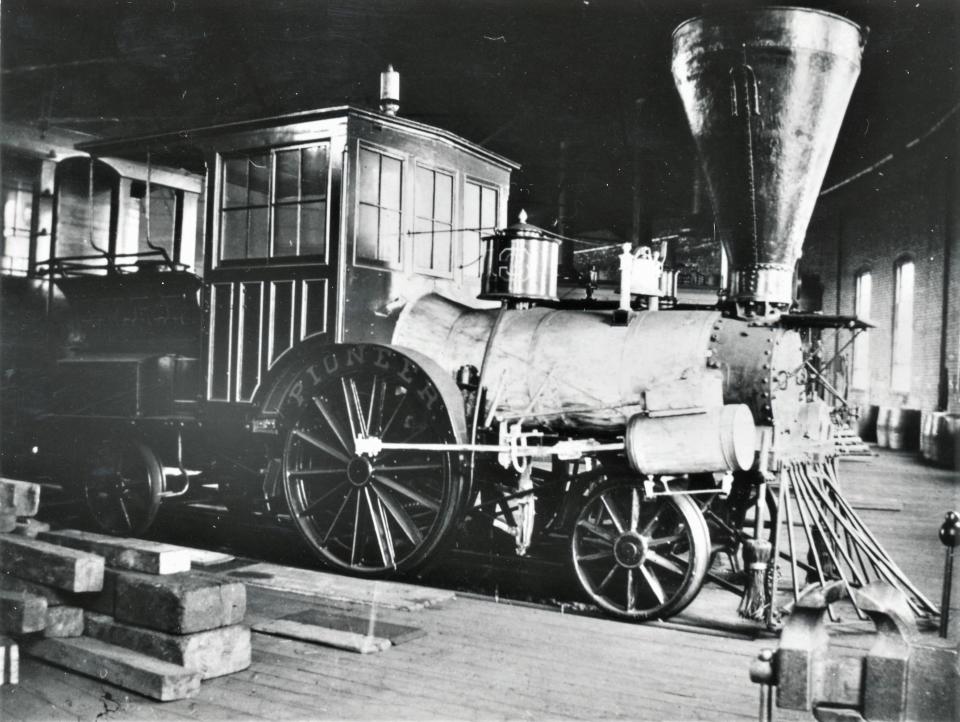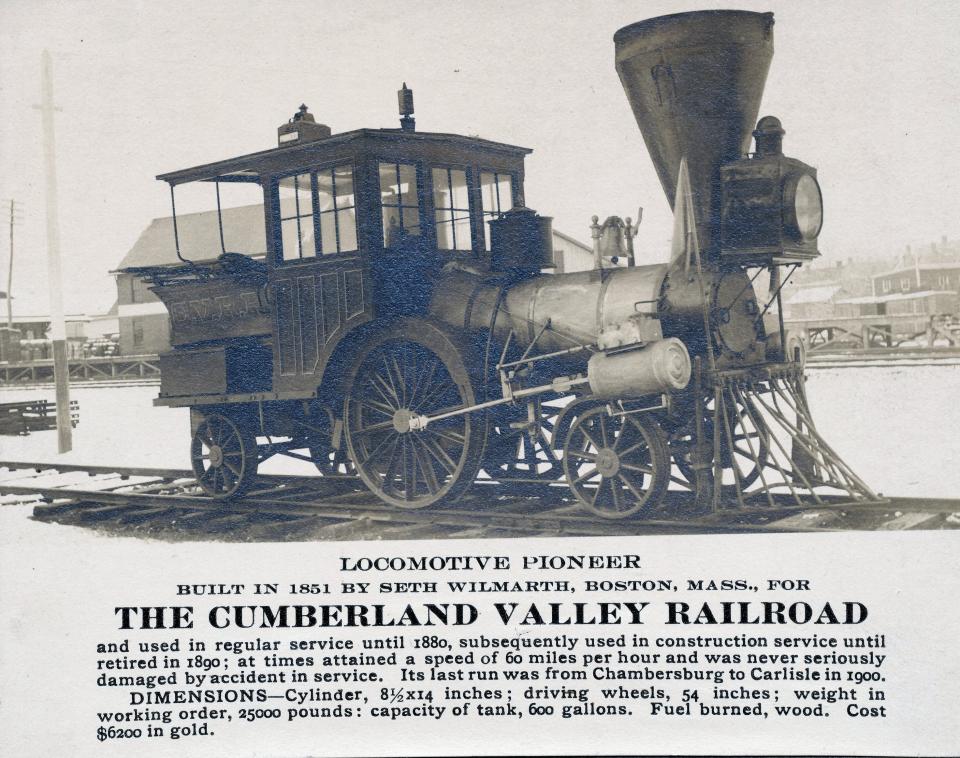Cumberland Valley Railroad engine moved passengers, freight through Franklin County
One of the pioneer railroads in the United States was chartered on April 2, 1831, known as the Cumberland Valley Railroad. After a few challenges, the charter had expired and had to be renewed on April 15, 1835.
With improved operations, the railroad would be completed from Carlisle to Chambersburg on Nov. 16, 1837. The Cumberland Valley line was known to be a general purpose railroad and served multiple markets.
The CVRR was hauling farm products, iron ore, passengers, parcels, lumber and many other products to support the needs within the communities along the line between Cumberland and Franklin counties. This railroad also offered personal, business and leisure transportation to other places in the Cumberland Valley.

In 1849, the management of the Cumberland Valley Railroad realized it needed to replace its worn out rail line and was ready to buy new locomotives for the growing line. The Board of Directors met to discuss the condition of the rail line and they decided to hire Capt. Daniel Tyler and Alba Smith to make the upgrade so the line was more efficient and to make recommendations for new locomotives.
Alba advised the gentlemen to purchase lighter locomotives as it would be a cost savings on fuel and repairs to the rail line. The board instructed Smith to review and evaluate two locomotives that had recently been completed by Seth Wilmarth of Boston.
When Alba gave a favorable report on the two new engines, the board instructed him to secure them and make the necessary arrangements for the engines to arrive at Chambersburg in September 1851. These two new locomotives would be known as the "Pioneer" No. 13 the “Jenny Lind” No. 14. The price tag for these two new additions to the Cumberland Valley line was $7,642 each, which was a real bargain as a larger engine would've cost at least $8,000.
Local news: What closed a Chambersburg area prep school? How things unraveled at Scotland Campus
After the Pioneer was placed into service, the little engine performed extremely well moving four passenger cars at a speed of 40 mph over the rail line.
During the Civil War, Chambersburg was first raided by Confederate forces under the command of J.E.B. Stuart on Oct. 10, 1862, and the area that was focused on doing destruction was to the Cumberland Valley Railroad's shops, especially the locomotives.
Some of the shops and engines were damaged and destroyed by fires set by the Confederate invaders. The Pioneer had some major damage, but in time, it was repaired by the skilled Cumberland Valley Railroad workers.
Of course, this wasn't the last time that the Southern forces came to Chambersburg as they would return in 1863 when headed to Gettysburg, and in 1864 with torches once again.
During the years of the Cumberland Valley's operation, the number of rail cars and the amount of freight increased, becoming too heavy for the light-class Pioneer. In 1880, the railroad purchased two new locomotives capable of pulling heavier loads.
By 1881, the Pioneer had traveled a grand total of 255,675 miles. It was time to pull the engine from the regular roster and use it for work trains. Eventually, in 1890, the Pioneer was placed in storage at the Cumberland Valley yard in Chambersburg.
In 1897, the Pioneer emerged from storage and was spruced up to be be taken to Waynesboro for display during the town's Centennial Celebration. The display of the Pioneer this day was second to none. The Citizens Band of Chambersburg preceded the Pioneer's float that was pulled by a traction engine along the parade route.
Also, accounts say it was a tremendous sight to see the 200 uniformed employees of the Cumberland Valley Railroad, wearing white caps and blue ribbons with "C.V.R.R." written in gold lettering. After the parade, the Pioneer returned to Chambersburg where it was stored in the old roundhouse.
During the fall of 1901, to mark Carlisle's sesquicentennial celebration, a group of Cumberland Valley employees went to the roundhouse and pulled the old faithful Pioneer up to the main shops to make the necessary preparations for the trip north.
Sad news came in August 1903 when the last regular engineer of the Pioneer, John Rooney, had passed away at his home in Shiresmanstown, Pa.
The Pioneer was taken to the St. Louis Exposition for display in 1904, then to Wheeling, W.Va., for the Semi- Centennial in 1913. For the next 12 years, old No. 13 was a favorite at the Apple Blossom Festival in Winchester, Va.
The Baltimore & Ohio Railroad had celebrated its Centennial of Service in 1927, and of course the Pioneer was present for this occasion. By 1933, the little engine was going to the Chicago World's Fair for all to see. In 1934, the Pioneer was placed on exhibit at the Franklin Institute at Philadelphia.

The Pennsylvania Railroad moved the engine once again to the Chicago Railroad Fair, held in 1948 and 1949, and then on to display at Northumberland, Pa., where the Pioneer was kept for 10 years before being moved to the Smithsonian Institute in 1961.
In later years, the engine was taken to Bethlehem, Pa., for exhibit.
Today, it can be seen on display at the B&O Railroad Museum in Baltimore.
How fitting it would be to see the Pioneer one day return home to Chambersburg for a suitable and permanent display.
M.L. “Mike” Marotte III is an author and historian who writes about the history of Franklin County. Read more of him at www.vintagefranklincountypa.com.
This article originally appeared on Chambersburg Public Opinion: Cumberland Valley Railroad's Pioneer engine now in B&O museum

